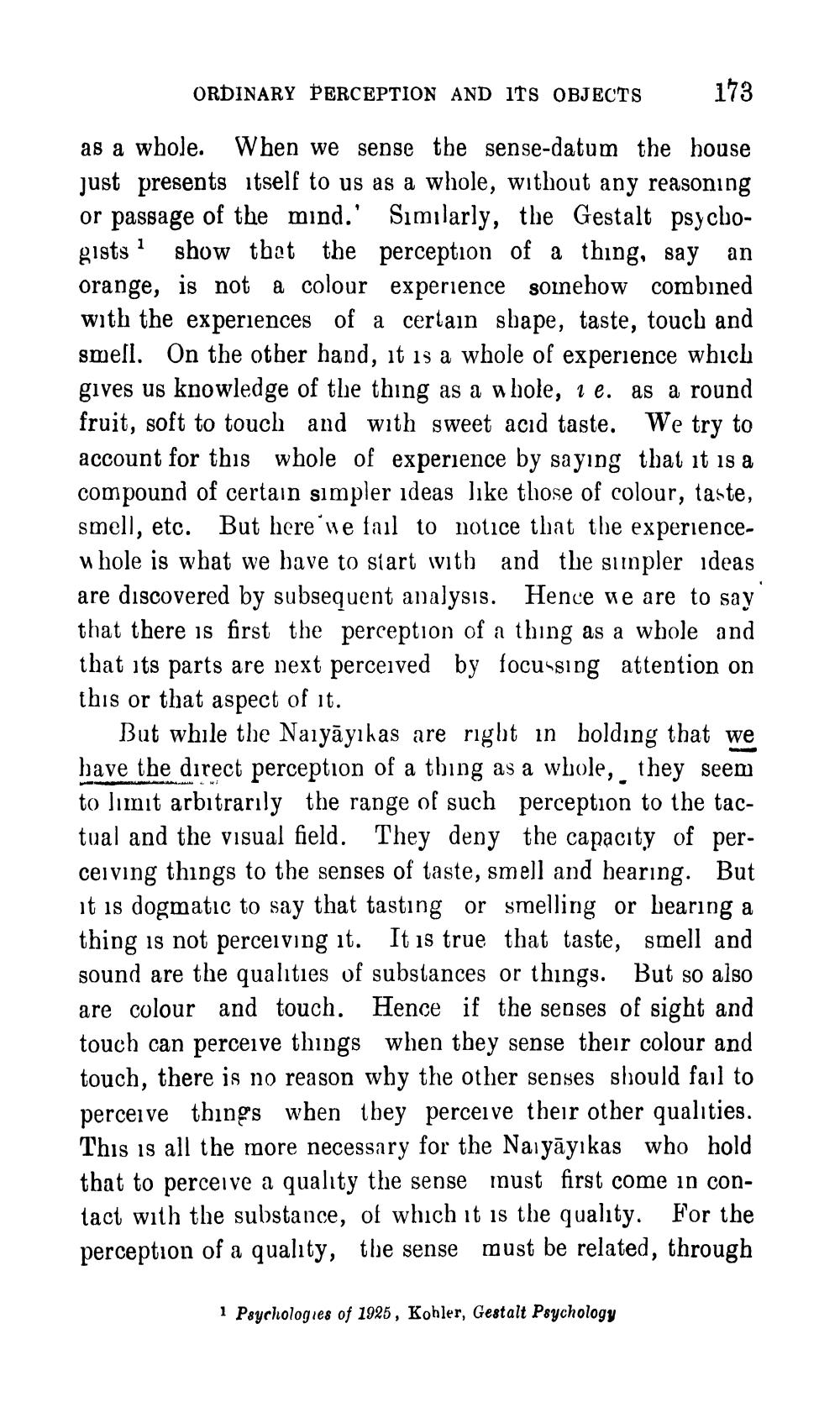________________
ORDINARY PERCEPTION AND ITS OBJECTS
173
as a whole. When we sense the sense-datum the house just presents itself to us as a whole, without any reasoning or passage of the mind.' Similarly, the Gestalt psychogists show that the perception of a thing, say an orange, is not a colour experience soinehow combined with the experiences of a certain shape, taste, touch and smell. On the other hand, it is a whole of experience which gives us knowledge of the thing as a whole, 1 e. as a round fruit, soft to touch and with sweet acid taste. We try to account for this whole of experience by saying that it is a compound of certain simpler ideas like those of colour, taste, smell, etc. But here ne fail to notice that the experiencewhole is what we have to siart with and the simpler ideas are discovered by subsequent analysis. Hence we are to say that there is first the perception of a thing as a whole and that its parts are next perceived by focussing attention on this or that aspect of it.
But while the Naiyāyıkas are right in holding that we have the direct perception of a thing as a whole,, they seem to limit arbitrarıly the range of such perception to the tactual and the visual field. They deny the capacity of perceiving things to the senses of taste, smell and hearing. But it is dogmatic to say that tasting or smelling or bearing a thing is not perceiving it. It is true that taste, smell and sound are the qualities of substances or things. But so also are colour and touch. Hence if the senses of sight and touch can perceive things when they sense their colour and touch, there is no reason why the other senses should fail to perceive things when they perceive their other qualities. This is all the more necessary for the Naiyāyıkas who hold that to perceive a quality the sense must first come in contact with the substance, of which it is the quality. For the perception of a quality, the sense must be related, through
1 Psychologies of 1925, Kohler, Gestalt Psychology




